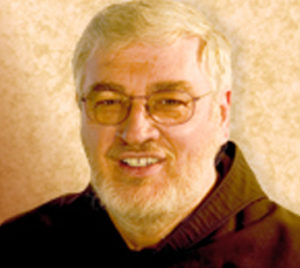
Readings:
First Reading: Malachi 3:1-4
Responsorial Psalm: 24: 8, 9, 10
Second Reading: Hebrews 2: 14-18
Gospel: Luke 2: 22-40 or 22-32
A most memorable moment in an event full of memorable moments occurred when Pope St. John XXIII greeted the Jewish observers at the Second Vatican Council with these words: “I am Joseph, your brother.” With this allusion to the Genesis story of Joseph and his brothers, Pope John signaled his intention to begin a dramatic shift in the relations between Jews and Catholics. He was determined to bring an end to the centuries of prejudice, hatred, and persecution that are a blight on the history of the Church that calls Abraham “our father in faith.” This simple, gracious and loving gesture inaugurated a time of conversion for Church. With Pope John’s example to follow, Catholics are called to treat the Jewish people as their sisters and brothers—for that is what they are. The Feast of the Presentation of the Lord is an opportunity for Catholics to assess how they are doing—especially in view of the rise of anti-Semitic acts in this country and around the world.
The Feast of the Presentation of the Lord is among the most ancient of the Church’s liturgical feasts. Originally, this feast was celebrated on February 15, forty days after Epiphany. When the birth of Jesus came to be celebrated on December 25, the feast of the Presentation was moved February 2, forty days after Christmas. At one time, today’s feast marked the end of the Christmas cycle and some Catholics continue to observe the custom of maintaining the Christmas crèche in their homes until February 2. In the current liturgical calendar, the Christmas season ends with the Feast of the Lord’s Baptism celebrated the Sunday after Epiphany.
A fourth-century pilgrim’s diary describes the manner of celebrating the feast of Presentation in Jerusalem. There was a procession to the Church of the Resurrection for the Eucharist with Luke 2:22 serving as the subject of the homily. This text highlights the obedience of Mary and Joseph to “the Law of Moses.” In the 5th century, the people of Jerusalem began the practice of holding lighted candles during the procession, taking their cue, no doubt, from Luke 2:12a, which speaks of the Christ event as “a light for revelation to the Gentiles…” This led to the practice of blessing candles on this feast, giving rise to another name for this feast: Candlemas. In the Churches of East, today’s celebration is known as “The Feast of the Meeting of the Lord” or “The Feast of the Encounter,’ focusing on the prophecies uttered by Simeon and Anna. In the Churches of the West, it was called “The Feast of the Purification of Mary” until the Sacramentary of Paul VI in which it was named “The Feast of the Purification of the Lord,” exchanging the feast’s Mariological focus for a Christological one. In 1997, Pope St. John Paul II added another dimension to this feast by attaching to it the “World Day for Consecrated Life” that sought to support religious women and men in their calling to be a light for the world.
The gospel lesson for today’s celebration reminds us of the connection that exists between Judaism and Christianity. There is no greater indicator of that connection than the story of Joseph and Mary bringing their son to the Jerusalem temple to present him to God. The Torah asserts that the firstborn of humans and animals belong to God (Exod 13:2). It was believed that sacrificing the firstborn assured continued fertility and well-being. The sacrifice of the firstborn was also a reminder that Israel’s liberation from Egypt following the plague that claimed the firstborn males of Egypt (Exod 13:13-15). Of course, parents were to “redeem” their firstborn child by sacrificing an animal in its place. Joseph and Mary offered a pair of doves (Luke 2:24), the kind of sacrifice that they could afford (see Lev 5:7). This visit to the temple also marked the occasion when Mary’s could once again join the worshiping community following her giving birth (see Lev 12:1-5). The gospel account combines the redemption of the firstborn with the purification of a new mother. The observance of these rites in the temple was the occasion for two prophets, Simeon and Anna, to speak about the child’s future. By way of contrast, John the Baptist, had only one prophetic word spoken at his circumcision and naming—that delivered by his father Zechariah (Luke 1:67-79)—a subtle indication of the relative significance of Jesus and John.
Doves, the temple, an old man and an old woman, candles, processions, the Christmas crèche, the different names for the feast, the Consecrated Life—one can get lost amid the various dimensions of today’s feast. The heart of this celebration, however, is the story of a young couple making a gift of their child to God because they were urged to do this by their ancestral religious tradition. Believers, whether Jew or Christian, want the same thing: the opportunity and freedom to live in accord with their religious beliefs and traditions. It is this commonality that ought to express itself in mutual respect—if not love—the love that led Pope John to introduce himself to the Jewish observers at Vatican II as “Joseph, your brother.”